Most Cited

2019, 68 (12): 120701.
doi:10.7498/aps.68.20190281
Abstract +
Modern infrared detector technology has a history of nearly eighty years. Since the first PbS photodiode was put into use during the World War II, infrared detectors have achieved significant progress, even the third-generation infrared systems have been proposed. In the past decades, the traditional infrared detectors represented by HgCdTe, InSb and InGaAs have been widely applied in military, remote sensing, communication, bioscience, and space exploration. However, the increasing applications demand higher performance infrared detectors. Especially in recent years, the intelligent infrared detection technique was strongly demanded in many high-tech fields such as artificial intelligence, virtual reality systems and smart city. Therefore, the fabricating of infrared detection systems with smaller size, lighter weight, lower power, higher performance and lower price has become an urgent task. At present, the infrared photodetectors are in an age of rapid change, and many new type of advanced infrared photodetectors come to the fore quickly. For the purpose of summarizing these detectors, they are reviewed covering four parts: microstructure coupled infrared detector, infrared detector based on band engineering, new type of low-dimensional material infrared detector, and new directions for traditional infrared detectors. In the infrared detection systems, these photodetectors can be fully used for their prominent performance. The microstructure coupled infrared detector can improve chip integration with high quantum efficiency. Precise design of band structure will raise the operating temperature for mid and long wavelenth infrared photodetectors. Owing to the unique structures and physical properties, low-dimensional material infrared photodetectors have shown their potential application value in flexibility and room temperature detection systems. The ability of avalanche photodetector to detect the extremely weak signal makes it possible using in the frontier science such as quantum private communication and three-dimensional radar imaging systems. The device based on hot electron effect provides a new idea for far infrared detection. The barrier detectors will reduce the manufacturing cost of traditional materials and the design is also very illuminating for other new materials. In this review, firstly we present the history of infrared photodetectors in short. Then the mechanism and achievements of the advanced infrared photodetectors are introduced in detail. Finally, the opportunities and challenges of infrared detection are summarized and predicted.
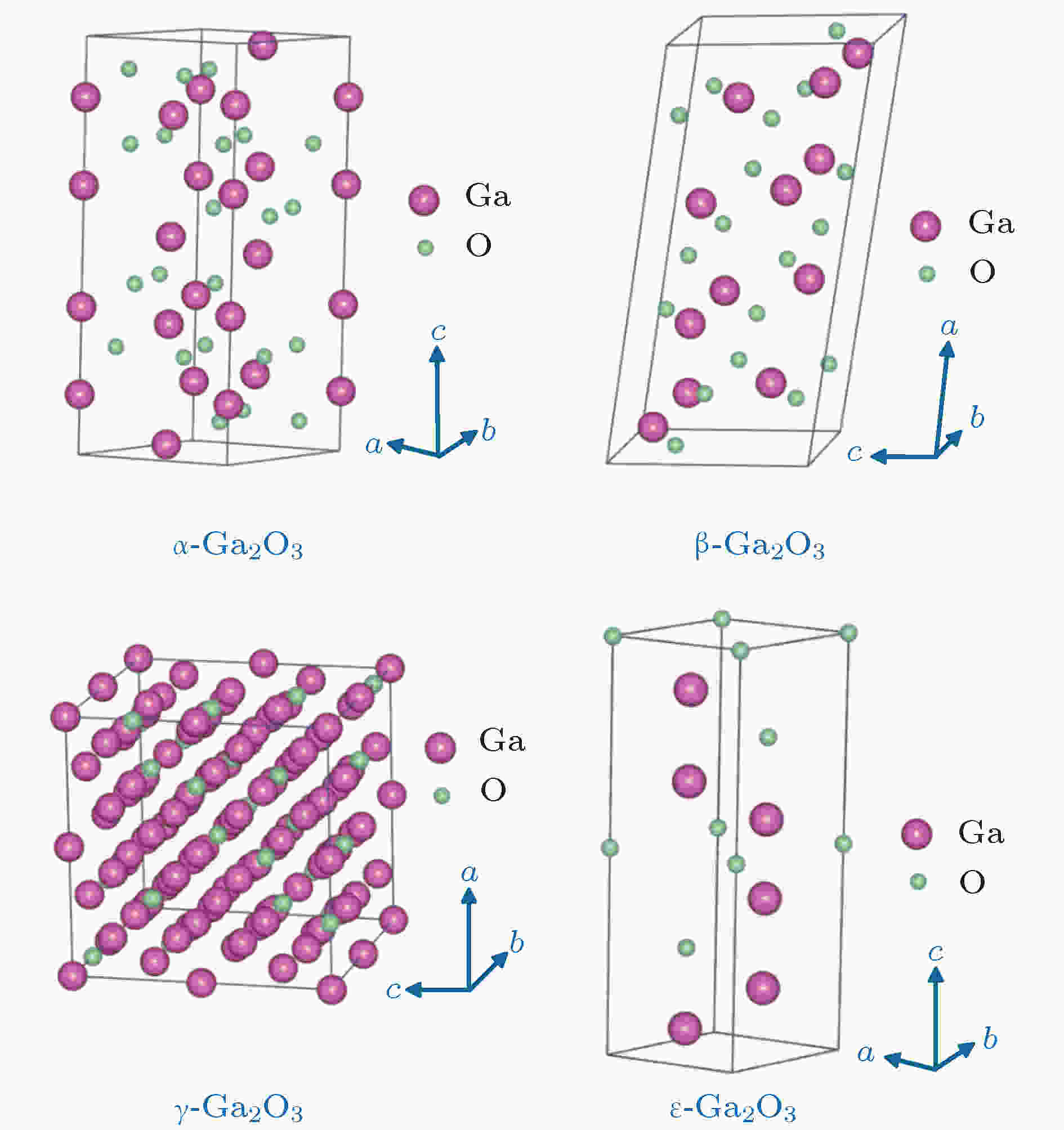
2019, 68 (7): 078501.
doi:10.7498/aps.68.20181845
Abstract +
Gallium oxide (Ga2O3), with a bandgap of about 4.9 eV, is a new type of ultra-wide bandgap semiconductor material. The Ga2O3can crystallize into five different phases, i.e.α,β,γ,δ, andε-phase. Among them, the monoclinicβ-Ga2O3(space group: C2/m) with the lattice parameters ofa= 12.23 Å,b= 3.04 Å,c= 5.80 Å, andβ= 103.7° has been recognized as the most stable phase. Theβ-Ga2O3can be grown in bulk form from edge-defined film-fed growth with a low-cost method. With a high theoretical breakdown electrical field (8 MV/cm) and large Baliga’s figure of merit, theβ-Ga2O3is a potential candidate material for next-generation high-power electronics (including diode and field effect transistor) and extreme environment electronics [high temperature, high radiation, and high voltage (low power) switching]. Due to a high transmittance to the deep ultraviolet-visible light with a wavelength longer than 253 nm, theβ-Ga2O3is a natural material for solar-blind ultraviolet detection and deep-ultraviolet transparent conductive electrode. In this paper, the crystal structure, physical properties and device applications of Ga2O3material are introduced. And the latest research progress ofβ-Ga2O3in deep ultraviolet transparent conductive electrode and solar-blind ultraviolet photodetector are reviewed. Although Sn doped Ga2O3thin film has a conductivity of up to 32.3 S/cm and a transmittance greater than 88%, there is still a long way to go for commercial transparent conductive electrode. At the same time, the development history ofβ-Ga2O3solar-blind ultraviolet photodetectors based on material type (nanometer, single crystal and thin film) is described in chronological order. The photodetector based on quasi-two-dimensionalβ-Ga2O3flakes shows the highest responsivity (1.8 × 105A/W). The photodetector based on ZnO/Ga2O3core/shell micron-wire has a best comprehensive performance, which exhibits a responsivity of 1.3 × 103A/W and a response time ranging from 20
${\text{μ}}{\rm{s}}$
to 254 nm light at –6 V. We look forward to applying theβ-Ga2O3based solar-blind ultraviolet photodetectors to military (such as: missile early warning and tracking, ultraviolet communication, harbor fog navigation, and so on) and civilian fields (such as ozone hole monitoring, disinfection and sterilization ultraviolet intensity monitoring, high voltage corona detection, forest fire ultraviolet monitoring, and so on).
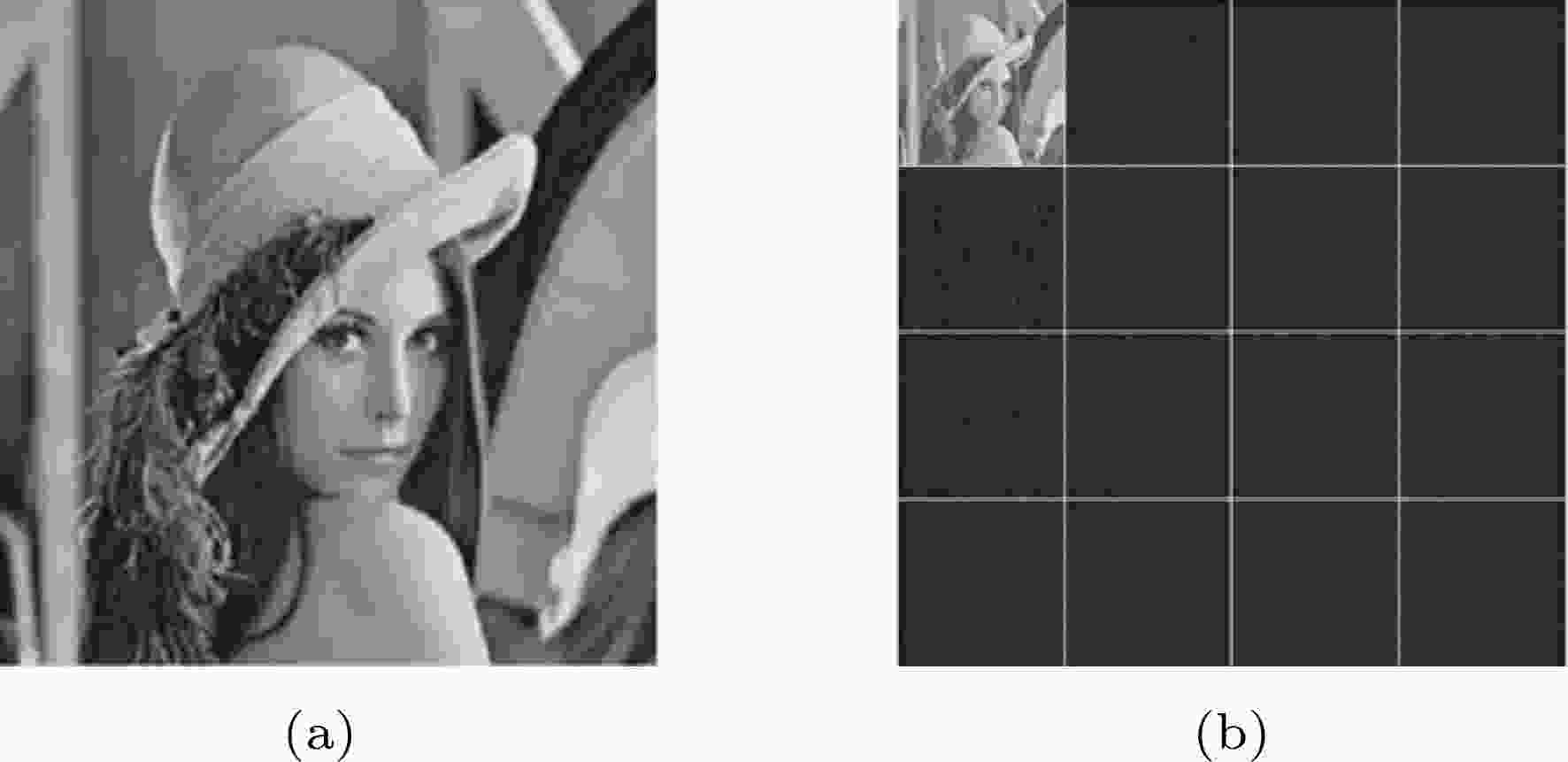
2019, 68 (20): 200501.
doi:10.7498/aps.68.20190553
Abstract +
With the rapid development of computer science, the storage and dissemination of information are often carried out between various types of computer hardwares and various networks. The traditional information encryption scheme has gradually disappeared. Therefore, computer-based information encryption algorithms have gradually become a research hotspot in recent years. By combining the theory of wavelet packet transform, compressed sensing and chaotic system, a multi-process image encryption scheme based on compressed sensing and multi-dimensional chaotic system is proposed. The encryption scheme implements compression and encryption for grayscale images and corresponding decompression and decryption process. The wavelet packet transform theory is applied to the image preprocessing stage to perform wavelet packet decomposition on the original image. At the same time, the image signal components obtained by the decomposition are classified according to the threshold processing method, and the characteristics of the image signal components are processed in the subsequent processing. They are compressed, encrypted, or reserved in a differentiated manner. In the image compression stage, by introducing the compressed sensing algorithm to overcome the shortcomings of the traditional Nyquist sampling theorem, such as high sampling cost and low reconstruction quality, the compression efficiency and compression quality are improved while the ciphertext image reconstruction quality is guaranteed. In the image encryption stage, the encryption scheme combines multi-class and multi-dimensional chaotic systems to confuse and scramble the related image signal components, and introduces a high-dimensional chaotic system to make the encryption scheme have a large enough key space to further enhance the ciphertext image reliability. Finally, the complete reconstruction of the original image is achieved by applying the inverse of compression, encryption and wavelet packet transform. The simulation results show that the image encryption scheme effectively protects the basic information about ciphertext images by virtue of algorithm robustness against external interference, and does not reveal any useful information when dealing with cracking methods such as plaintext attacks. In addition, the information entropy and correlation coefficient of ciphertext images encrypted by this encryption scheme are closer to ideal values than those of the encryption algorithm in the references, and its encryption performance is significantly improved.
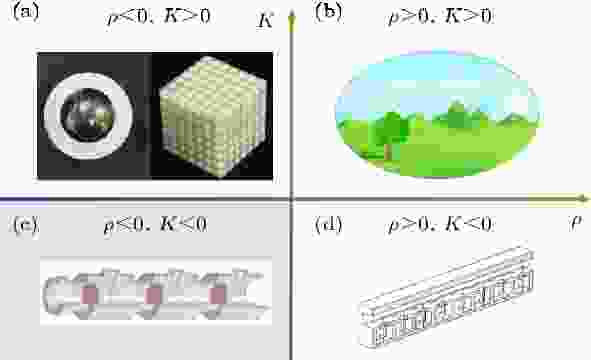
2019, 68 (19): 194301.
doi:10.7498/aps.68.20190850
Abstract +
Acoustic metamaterials have opened up unprecedented possibilities for wave manipulation, and can be utilized to realize many novel and fascinating physical phenomena, such as acoustic self-collimation, cloaking, asymmetric transmission, and negative refraction. In this review, we explore the fundamental physics of acoustic metamaterials and introduce several exciting developments, including the realization of unconventional effective parameters, acoustic metasurface, total sound absorption, high-resolution imaging, parity-time-symmetric materials, and topological acoustics. Acoustic metamatetials with negative effective parameters that are not observed in nature expand acoustic properties of natural materials. Acoustic metasurfaces can exhibit wavefront-shaping capabilities, with thickness being much smaller than the wavelength. The precisely designed matematerials provide the new possibility of steering waves on a subwavelength scale, which can be used for acoustic high-resolution imaging beyond the diffraction limit. The metamaterial absorbers can achieve total sound absorption at low frequencies and exhibit broadband absorption spectrum. Moreover, structure designs guided by the topological physics further broaden the whole field of acoustic metamaterials. Phononic crystals have become aflexible platform for studying new physics and exotic phenomenarelated to topological phases. Finally, we conclude the developments of acoustic metamaterials, discuss the technical challenges, and introduce potential applications in this emerging field.
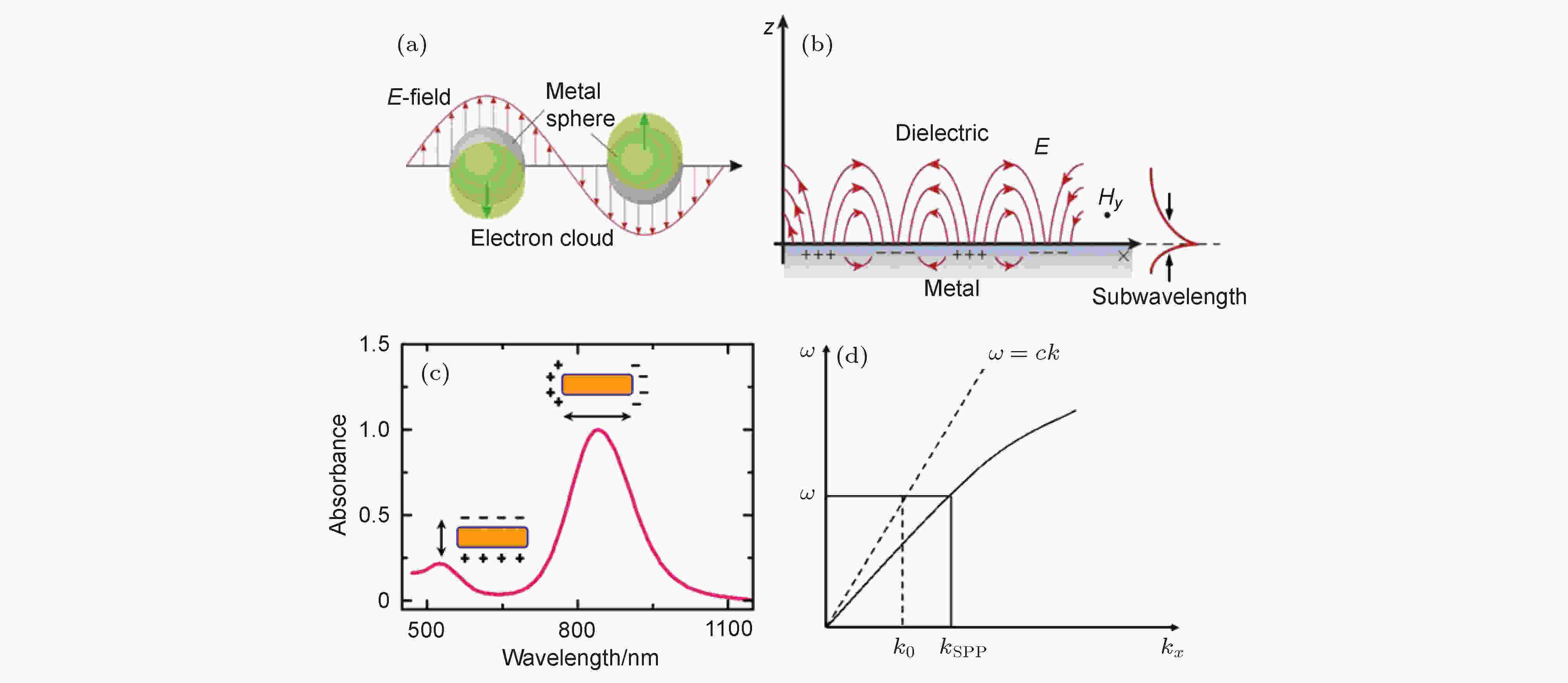
2019, 68 (14): 149101.
doi:10.7498/aps.68.20190337
Abstract +
Surface plasmon polaritons (SPPs) have been widely investigated in the past decades. Due to their unique feature of field localization, optical energy can be strongly confined in the subwavelength and even nanoscale space. This strong confinement gives rise to dramatically increased electromagnetic field strength, leading to greatly enhanced light-matter interactions. The properties of SPP are strongly dependent on material, morphology and structure. The wavelength of surface plasmon resonance can be readily manipulated over broadband optical spectra, covering ultraviolet, visible, near infrared to far infrared. In this review article, both working principle and applications of surface plasmon enhanced light-matter interactions, such as fluorescence, Raman scattering, nonlinear optics, heat effects, photoacoustic effects, photo-catalysis, and photovoltaic conversion, are comprehensively reviewed. Besides, the current problems and future research directions of surface plasmons are discussed. Our paper provides valuable reference for future high-performance plasmonic device and technology applications.
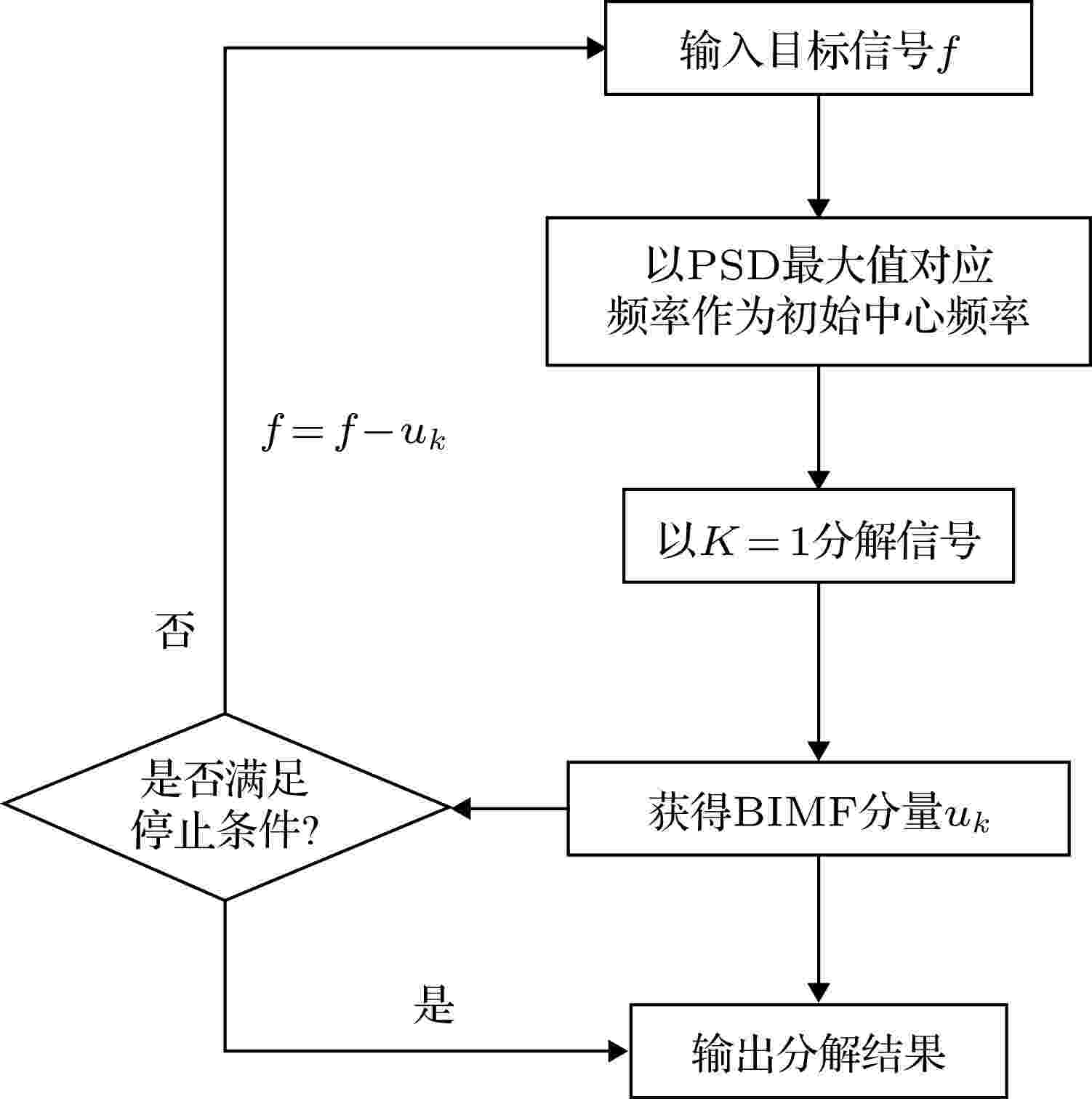
2019, 68 (23): 238401.
doi:10.7498/aps.68.20191005
Abstract +
Variational mode decomposition can improve traditional recursive algorithms, such as empirical mode decomposition, resulting modal aliasing and endpoint effects, but it has a significant influence on signal decomposition accuracy due to its pre-set parameters. The frequency corresponding to the peak value of the target signal power spectrum is proposed to initialize the center frequency required for the variational mode decomposition. The empirical mode decomposition and recursive model is used to improve the variational mode decomposition into the recursive mode algorithm based on the energy cutoff method. The group optimization algorithm optimally takes the penalty factor with bandwidth constraint ability to form an optimized recursive variational mode decomposition. By comparing with and analyzing empirical mode decomposition, integrating empirical mode decomposition and optimizing the computational accuracy of recursive variational mode decomposition in decomposing signals; studying traditional variational mode decomposition and optimizing recursive variational mode decomposition in dealing with actual vibration signals calculating rate, the results are obtained, showing that the optimized recursive variational mode decomposition has the highest accuracy when dealing with the target signal, and the correlation with the original component is 99.9%. Comparing with the integrated empirical mode decomposition, the signal can be decomposed into different frequency bands from low to high, and the physical meaning is clearer. No false modality is generated. When the actual nonlinear signal is processed, the optimized recursive variational mode decomposition does not need to preset the number of decomposition modes, and the calculation rate is 12.5%–18.5% higher than thay of the traditional variational mode decomposition.

2019, 68 (6): 064202.
doi:10.7498/aps.68.20181886
Abstract +
Single-pixel imaging is a computational imaging scheme that offers novel solutions for multi-spectral imaging, feature-based imaging, polarimetric imaging, three-dimensional imaging, holographic imaging, and optical encryption. The single-pixel imaging scheme can be used for imaging in wave band such as infrared and micro wave imaging, or will be useful in the case where the array detector technique is difficult to meet the requirement such as the sensitivity or the volume. The main limitation for its application comes from a trade-off between spatial resolution and acquisition time, in other words, from relatively high measurement and reconstruction time. Although compressive sensing technique can be used to improve the acquisition time by reducing the number of samplings, the computational time to reconstruct an image is not fast enough to satisfy the real-time video. In this paper, we propose to reduce the required signal acquisition time by using a novel sampling scheme based on optimized ordering of the Hadamard basis, and improve the image reconstruction efficiency by using fast Walsh-Hadamard transform. In our method, the Hadamard basis is rearranged in the ascendant order of the values of its " sparsity” coefficients which are obtained through " Daubechies wavelets 1 (Haar wavelets)”, " Daubechies wavelets 2” wavelet transform and discrete cosine transform, and then compute each total sum of the transformed coefficients’ absolute value, respectively. The measurement order of the Hadamard basis is then rearranged directly according to Walsh order and random permutation order. The peak signal-to-noise ratio (PSNR) and structural similarity index (SSIM) of the retrieved images are computed and compared to test all the five reordering schemes above both in our numerical simulation and outdoor experiments. We find that the reordering method based on Haar wavelet transform is the best PSNR and SSIM and it can reconstruct image under a sampling ratio of 25% which corresponds to the recovering time in which 300 frame per second @64 × 64 pixels single-pixel imaging can be achieved. The optimized measurement order of Hadamard basis greatly simplifies post processing, resulting in significantly faster image reconstruction, which steps further toward high frame rate single-pixel imaging’s applications. Moreover, we propose a novel method to optimize measurement basis in single-pixel imaging, which may be useful in other basis optimizing, such as optimized random speckles, etc.
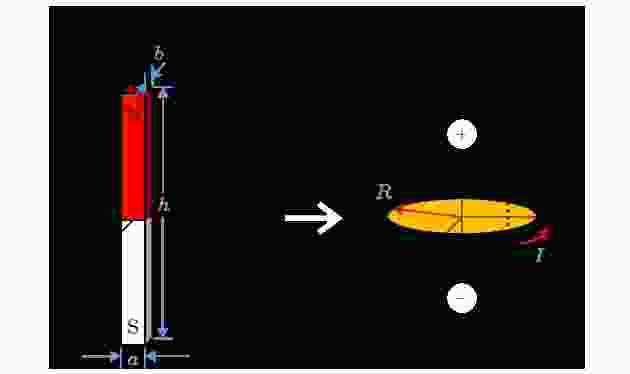
2019, 68 (18): 188401.
doi:10.7498/aps.68.20190339
Abstract +
Long wavelength results in the low radiation efficiency of a portable conventional antenna operating at very low frequency (VLF) and below. This has motivated one to develop an innovative approach to design an electrically small antenna in a frequency band lower than VLF. The time-varying electromagnetic fields can be generated by spinning a permanent magnet. In this way, the mechanical energy is converted to the electromagnetic energy, and the impedance matching networks with nonnegligible insertion loss are not required. Therefore, this mechanical antenna with spinning magnet can improve radiation efficiency in a low frequency band. In this paper, we give the detailed analysis procedure for the spinning magnet, which is seldom discussed in other published reports. In order to analyze the electromagnetic characteristics of the spinning magnet, in this paper we use the ampere return circuit theorem to investigate the equivalent relation between a spinning magnet and the orthogonal magnetic dipole. We introduce an initial spinning angle of the magnet into the dyadic green’s function. With this modification, we provide the rigorous analytic formula for field computation of the orthogonal magnetic dipole. Thus the electromagnetic characteristics of the spinning magnet and spinning magnet array can also be analyzed. For a spinning NdFeB magnet with a magnetization ofBr= 0.8 T and a volume ofVr= 270 cm3as well as 9600 revolutions per minute, the simulation results reveal that the magnetic field of 15 fT at 1 km in air space can be obtained. But the magnetic field of the spinning magnet decreases quickly to 1 fT at 250 m in sea water. Considering the potential demand for increasing the field strength in the near field region, we recommend to use a magnet array with small-sized elements. The magnet array can be used to control the near field pattern. We take two magnets as an example for studying the performance. It can be found from the simulation results that the magnetic near field is increased by 3 dB with the linear magnet array consisting of two elements. With the initial spinning angle of the magnet element adjusted, the near field pattern of the magnet array can be controlled. This is analogous to beam steering of traditional phased array for high band operation. It can be concluded from our study that the spinning magnet is a possible alternative solution for low frequency small transmitter antenna.

2019, 68 (24): 247301.
doi:10.7498/aps.68.20191369
Abstract +
Metal surface plasmon is a collective oscillation effect of free electrons at the micro-nanostructure surface under the stimulation of incident light. Since the corresponding oscillating electric field is strongly bound below the sub-wavelength scale, it can be used as an information carrier for future micro-nano photonic circuit and device, and can also be used to enhance the interaction between light and matter on a micro-nano scale, such as surface enhanced photoluminescence, Raman scattering, nonlinear signal generation, surface enhanced catalysis, photothermal conversion, photovoltaic conversion, etc. How to theoretically understand the unique optical behavior dominated by the plasmon oscillation mode is one of the hot research spots in the field of surface plasmon photonics. In recent years, the theory of surface plasmon has been continuously improved with the support of a large number of experimental researches. In this paper, we first systematically summarize the optical behaviors and properties of metal under the excitation of incident electromagnetic waves, and then briefly describe the plasmonic modes existing in the metal and their corresponding physical natures, the oscillation dynamics process and the currently prevailing surface plasmon coupling theories. We hope that this paper can provide a theoretical basis for those researchers who have just dabbled in the field of surface plasmons and help them to master the relevant basic knowledge quickly.
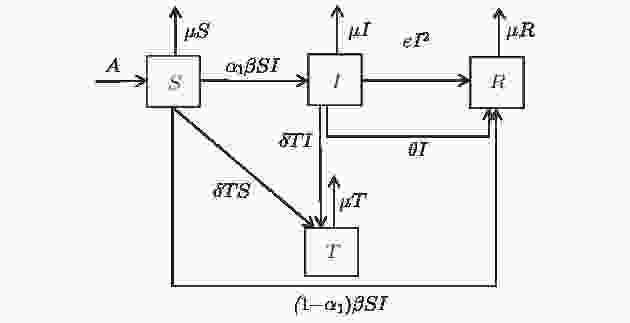
2019, 68 (15): 150501.
doi:10.7498/aps.68.20190191
Abstract +
In the process of rumor propagation, people who know the truth or judge the truth can spread true information about rumors. Therefore, on the rumor propagation, it is significant to introduce the spreaders who spread true information in the rumor propagation. But the previous studies did not take into consideration the influence of true information spreading on the rumor propagation. In this paper, the susceptible-infective-true-removed (SITR) rumor propagation model with the true information spreader and the forgetting factor of rumors is established. The thresholdK0is obtained by using the method of the next generation matrix. IfK0< 1, the balance between no rumor and no true information spreader is locally asymptotically stable. The existence and stability of two boundary balance (that is, there are rumor spreaders but no true information spreaders, and there are no rumor spreaders but true information spreaders) are proved. The bistable region of two-boundary balance is given. Further, under different conditions we obtain the existence and locally asymptotical stability of positive balance (rumor spreaders and true information spreaders coexist). Finally, the theoretical results are verified by numerical simulations. We find that the initial value of the true information spreaders affects the peak value of the rumor spreaders and the duration of the rumor. The bigger the initial value of the true information spreaders, the smaller the peak value of the rumor spreaders is and the shorter the duration of the rumor is. The initial value of the rumor spreaders affects the peak value of the rumor spreaders, and the time when the rumor spreaders reach the peak value. The larger the initial value of the rumor spreaders, the larger the peak value of the rumor spreaders is and the earlier the peak value appears. But the initial value of the rumor spreaders does not affect the duration of the rumor. Therefore, in the process of rumor propagation, according to mathematical analysis of the rumor propagation model, we find that the rumor spread is a very complicated process. The results of mathematical analysis can provide theoretical basis to control the rumor propagation and reduce the negative effects of rumors.
2019, 68 (1): 017401.
doi:10.7498/aps.68.20181531
Abstract +
ZnO is a wide bandgap semiconductor with the advantages of good stability, strong radiation resistance, and low cost. It has become a hot material in the field of photocatalysis, but it can only absorb purple light. Therefore, it is a valuable problem to study how to expand the response range of ZnO to visible light. Doping modification is a common method to solve this problem. In order to carry out the relevant research, the calculation in this paper are carried out by the CASTEP tool in Materials Studio software based on the first-principles of ultrasoft pseudopotential of density functional theory, the geometric structures of ZnO, Zn0.875Pr0.125O, ZnO0.875N0.125, Zn0.875Pr0.125O0.875N0.125, Zn0.75Pr0.25O0.875N0.125, Zn0.625Pr0.375O0.875N0.125are constructed. All the models are based on the optimization of the geometry structure. By using the method of generalized gradient approximation plus U, we calculate the band structure, density of states, population, absorption spectra and dielectric functions of the models. The results show Co-doped system is easier to form than single-doped system, and the stability of the co-doped system increases first and then decreases with the increase of Pr concentration. The population ratio of the shortest Zn-O bond to the longest Zn-O bond in the same system increases first and then decreases with the impurity concentration, which shows that the doping of impurities has a great influence on the lattice distortion of the system, and the distortion is benefit for the separation of photogenerated hole-electron pairs. Therefore, the photocatalytic activity of the materials can be improved. Hybridization of N-2p and Pr-4f states destroys the integrity of crystals and forms crystal fields around impurity atoms, which results in splitting of energy levels and narrowing of bandgap. Compared with intrinsic ZnO, the static dielectric constant of all doped systems increases, especially the constant of Pr-N co-doped systems increases with the increase of doped Pr concentration, which indicates that the polarization ability of the co-doped systems increases with the increase of doped Pr atomic concentration. The main peaks of the dielectric function imaginary part of the doping systems move to the low energy region, and the absorption spectrums are red-shifted. As the concentration of impurity Pr atom increases, in the visible region, the absorption capacity of each co-doped system increases, their response range is enlarged in turn, showing the co-doping of N and Pr is benefit for improving the photocatalytic activity of ZnO.
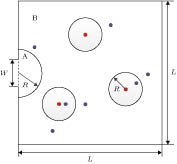
2019, 68 (24): 240504.
doi:10.7498/aps.68.20190707
Abstract +
In order to investigate the following behaviors of pedestrians under limited visibility, pedestrian evacuation is simulated by an improved cellular automata model. Considering the familiarity of pedestrians with the environment, pedestrians are divided into two types: Informed type and uninformed type. For the informed pedestrians, an extended cost potential field cellular automata model is proposed. For the uninformed pedestrians, some following behavior strategies are suggested to study their evacuation behaviors. These following behaviors include following a pedestrian in the visibility (S1), following the most people’s position in the visibility (S2), following the most movement direction in the visibility (S3), and walking along the wall (S4). To investigate the evacuation efficiency of these different following strategies, we compare the performances of different densities of informed pedestrians, different visibility and different pedestrian proportions. As demonstrated by the simulation results, evacuation efficiency and the effectiveness of the following strategies are related to the visibility and density of informed pedestrians. The simulation results show that when the density of informed pedestrians is constant, S4 is more efficient at very poor visibility (R= 1), strategy S3 and S4 are more efficient at poor visibility (1 <R< 7), and the four strategies are equally efficient at good visibility (R> 6). In addition, when the visibility is constant, the density of informed pedestrians is less than 0.5, strategy S3 is the most efficient strategy. When the visibility is constant, the density of informed pedestrians is more than 0.5, the four strategies have a better performance. Moreover, it is noted that the same regular changes also exist in a single strategy environment. These findings can provide some insights into the emergency evacuation of large public places such as supermarkets and stadiums, and help develop effective guidance strategies under limited visibility.

2019, 68 (22): 226101.
doi:10.7498/aps.68.20191101
Abstract +
2019, 68 (1): 019201.
doi:10.7498/aps.68.20181357
Abstract +
Soil is the foundation of food security, water safety and wider ecosystem security. China's water resources is featured by its poverty and uneven distribution. Flood irrigation in traditional agriculture not only uses large amount of water, but also destroys soil aggregate structure, resulting in soil degradation, such as soil compaction and soil salinization. Underground drip irrigation have obvious water saving efficiency with the effective utilization rate of water larger than 95%, but it will also destroy the soil structure to a certain extent. It has been reported in many researches that using aerated water drip irrigation can not only increase crop yields, but also improve crop quality. The influence of several factors such as the burial depth of drop head, the frequency of dripping, the amount of irrigation, the growth period of plant, the mode of aerating and the equipment and so on, and the effects of the aerated drip irrigation on the water environment, the air environment, the microbial environment, the nutrient environment and the mineral environment of soil are summarized. And the regulation mechanism of soil environment by the aerated drip irrigation is put forward. The changes in water, gas, microorganism, nutrition and minerals are the result of the change of soil structure. The experimental results of in situ synchrotron radiation X-ray computed tomography confirmed that aerated drip irrigation can change the structure of soil.

2019, 68 (16): 168504.
doi:10.7498/aps.68.20191262
Abstract +
Memristors are considered to be the potential candidate for simulating synapses due to their high density, low power consumption and continuously adjustable resistance. Metal oxide is an ideal choice for fabricating memristive devices with high performance due to its advantages of oxygen migration, easy adjustment of components and compatibility with traditional CMOS. In this review paper, the memristive behaviors and operation mechanism of oxide-based memristors including digital-type memristors and analog-type memristors are first introduced. We mainly summarize the cognitive functions simulated by analog-type memristive synapse, including nonlinear-transmission characteristic, synaptic plasticity, learning experience, and non-associative/associative learning. Then, the potential applications of memristive synapse in pattern recognition, sound localization, logic operation, flexibility/transferability and optoelectronic memristive synapse are introduced. Finally, we provide an outlook of the future possible studies of oxide-based memristive synapse in the relevant fields.
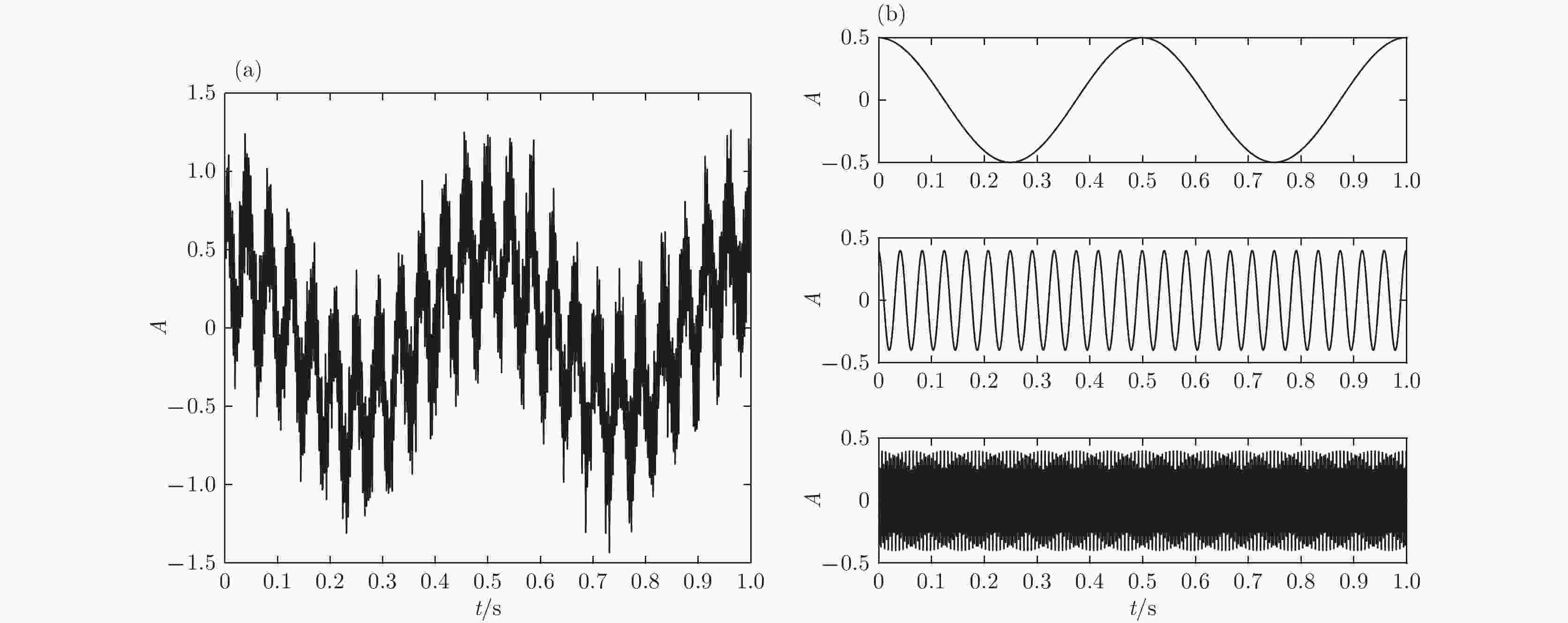
2019, 68 (2): 028702.
doi:10.7498/aps.68.20181772
Abstract +
It is an important practical problem to accurately recognize whether biological tissue is denatured during high intensity focused ultrasound (HIFU) treatment. Ultrasonic scattering echo signals are related to some physical properties of biological tissues. According to the characteristics of ultrasonic scattering echo signals, the recognition of denatured biological tissues is studied based on the variational mode decomposition (VMD) and multi-scale permutation entropy (MPE) in this paper. The ultrasonic echo signals are decomposed into various modal components by the VMD. The noise components and the useful components are separated according to the power spectrum information entropy of various modal components. The separated useful signals are reconstructed and the MPE are extracted. Furthermore, Gustafson-Kessel (GK) fuzzy clustering analysis is employed to obtain the standard clustering center, and the recognition of denatured biological tissues is carried out by Euclid approach degree and principle of proximity. The proposed method is applied to ultrasonic scattering echo signal during HIFU treatment. In order to determine the parameters of MPE algorithm for ultrasonic scattering echo signals, the embedding dimension of the MPE is discussed, and the scale factor of the MPE algorithm is optimized by genetic algorithm. When the delay time and the embedding dimension are 2 and 7 respectively, the MPE values decrease with scale factor increasing. Assuming that the scale factor is 12 from optimization results, the 293 ultrasonic scattering echo signals from normal tissues and denatured tissues are analyzed by the MPE. It is found that the MPE values of the denatured tissues are higher than those of the normal tissues. The MPE can be used to distinguish normal tissues and denatured tissues. Comparing with the recognition methods of the EMD-MPE-GK fuzzy clustering method and the VMD-WE-GK fuzzy clustering, the proposed method has good clustering performance and separability. Its partition coefficient (PC) is close to 1 and the Xie-Beni (XB) index is smaller. There are fewer feature points in the overlap region between MPE features of denatured tissues and normal tissues. The recognition results of denatured biological tissues in this experimental environment show that the recognition rate based on this method is higher, reaching up to 93.81%.
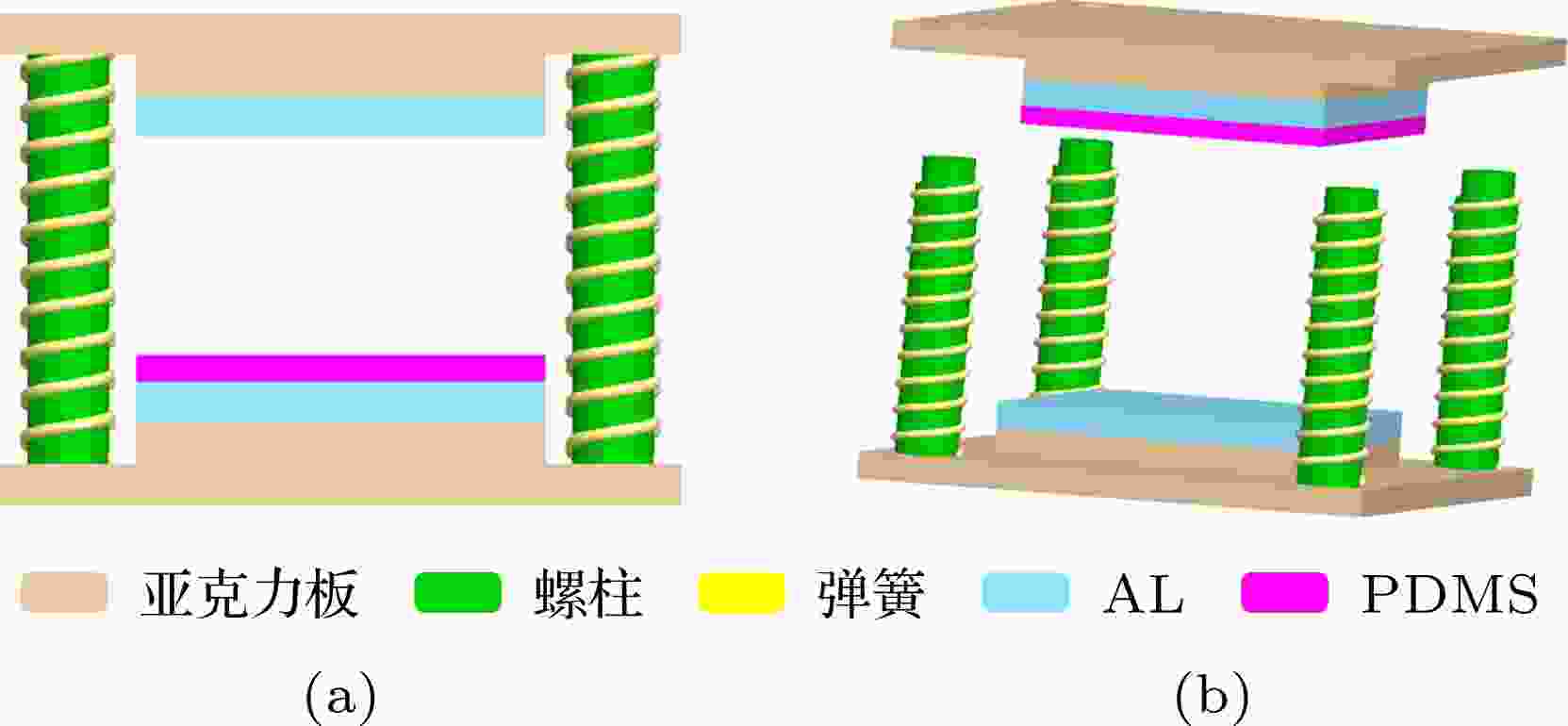
2019, 68 (19): 190201.
doi:10.7498/aps.68.20190806
Abstract +
With the advent of global warming and energy crisis, the search for renewable energy to reduce carbon emissions has become one of the most urgent challenges. Ithas become a research hotspot to collect or harvest various mechanical energy in nature and convert it into electric energy. Vibration is a common form of mechanical movement in our daily life. It is visible both on most working machines and in nature and is a type of potential energy. There are several methods that can convert such mechanical energy into electric energy. Triboelectric nanogenerator (TENG) based on the principle of contact electrification and electrostatic induction which first appeared in 2012 by Zhonglin Wang provides a feasible method of efficiently collecting the vibrational energy with different vibrating frequencies. In this paper, a contact-separation mode of TENG is designed and implemented. The voltage- quantity of charge- distance(V-Q-x)relation of TENG is calculated. During the experiment, the factors such as load resistance, vibration frequency, etc. which affect the output performance, are considered and analyzed. An electrically driven crank-connecting rod mechanism is employed to provide the vibration source with adjustable frequency in a range of 1-6 Hz. The result shows that the amount of charge transfer in each working cycle remains almost unchanged, while the voltage and current increase with frequency increasing. When the frequency is 5 Hz, the best power matching resistance of the TENG is about 33 MΩ and the maximum output power reaches 0.5 mW. For a further study, a COMSOL software is used to simulate the distribution rule and variation rule of the electric potential in the contact-separation process, then the theoretical charge density and the experimental charge density on the polymer surface are compared and analyzed in order to provide theoretical and practical support for the design of TENG with collected vibration energy and self-powered vibration sensor. The result shows that the electric potential is proportional to the distance between two friction layers. While as the distance between two friction layers increases, the electric potential and the charge density both show a tendency to concentrate in the middle of the friction layer. The huge difference between experimental result and the simulation predicts thatmuch work should be done continually to improve the output of the TENG. Finally, the obtained results conduce to understanding the contact electrification and electrostatic induction mechanism and also provide a new method of harvesting the vibration energy.
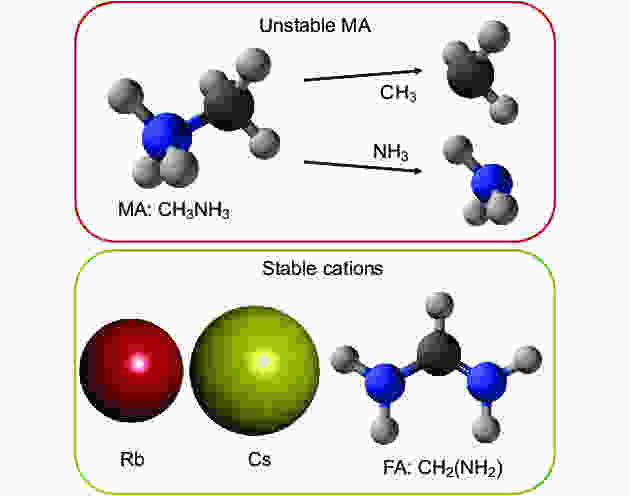
2019, 68 (15): 158804.
doi:10.7498/aps.68.20190343
Abstract +
The power conversion efficiency of organic-inorganic hybrid perovskite solar cell has exceeded 24%. The rapid increase in efficiency coupled with its cost-effective fabrication has attracted tremendous attention toward the commercialization of perovskite solar cells. The biggest challenge that hinders the commercialization of perovskite solar cells is the long-term instability of materials and the corresponding devices, which cannot compete with other commercialized solar cells, such as Si cells, in terms of lifetime. The intrinsic instability of perovskite material itself is the most critical challenge faced by researchers. In this study, we discuss the intrinsic instability of organic-inorganic hybrid perovskite materials from the aspects of both chemical instability and phase instability. Suggestions for improving the stability of perovskite solar cell are provided from the perspective of composition design and fabrication process.
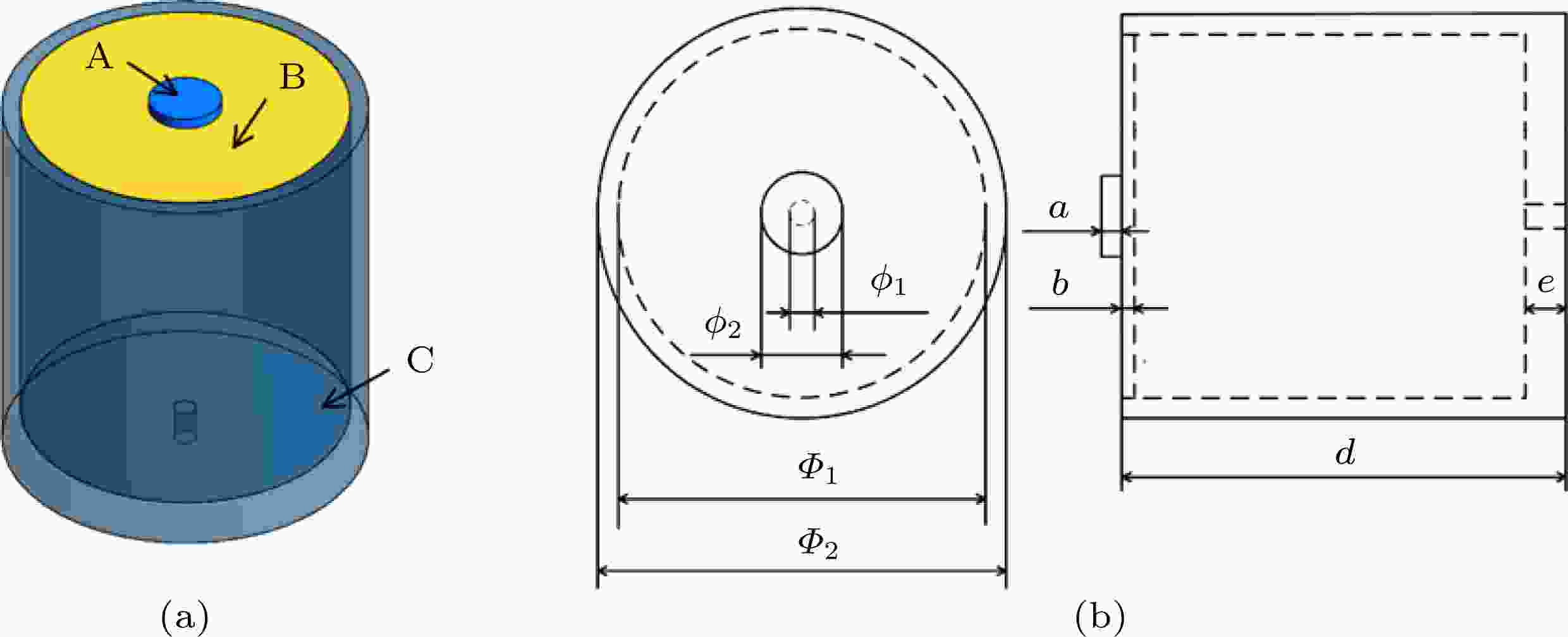
2019, 68 (21): 214302.
doi:10.7498/aps.68.20191131
Abstract +
Aiming at the isolation of low-frequency noise, an acoustic metamaterial is designed based on Helmholtz cavity and thin film structure. It consists of a Helmholtz cavity with film bottom and the mass block attached to the cavity. By the finite element method, the transmission losses and resonance frequencies of metamaterials in a frequency range of 20-1200 Hz are calculated and also verified experimentally. The results show that the metamaterial has great sound insulation performance in the frequency range. There are six sound insulation peaks, of which the two sound insulation peaks below 100 Hz have the transmission losses of 44.29 dB and 67.43 dB, respectively. The maximum transmission loss in the whole frequency range is 90.18 dB. Comparing with the normal Helmholtz cavity or thin film acoustic metamaterial or traditional material, the sound insulation performance of the metamaterial is improved greatly. By analyzing the resonance and vibration mode diagram at the sound insulation peaks comprehensively, the sound insulation mechanism of the metamaterial is further explored. The results show that many resonance modes have no effect on transmission loss only when the resonance mode can be coupled with the incident wave and is not an antisymmetric mode which can affect the transmission loss. The transmission and reflection coefficient of the metamaterial are calculated by the finite element method, and through the method for retrieving effective properties, the effective mass density and effective modulus are obtained. It is found that there is a negative effective mass density at the sound insulation peak, meanwhile the effective modulus is close to zero. The generation mechanism of abnormal equivalent parameters is analyzed from the energy view point. The acoustic impedance of the metamaterial is obtained by an equivalent circuit method, through which the first resonance frequency is calculated relatively accurately. According to the results of the previous study on sound insulation mechanism, the effect of the eccentric mass unit on the sound insulation performance of metamaterial is studied. It is found that the eccentric mass can greatly reduce the antisymmetric resonance mode and increase the sound insulation peak of the structure, which is also verified experimentally. The results provide a reference for designing the acoustic metamaterials.
2019, 68 (1): 018901.
doi:10.7498/aps.68.20181388
Abstract +
Structure entropy can evaluate the heterogeneity of complex networks, but traditional structure entropy has deficiencies in comprehensively reflecting the global and local network features. In this paper, we define a new structure entropy based on the number of theK-order neighbor nodes which refer to those nodes which a node can reach withinKsteps. It can be supposed that the moreK-order neighbors a node has, the more important role the node plays in the network structure. Combining the formula of Shannon entropy, theK-order structure entropy can be defined and figured out to explain the differences among the relative importance among nodes. Meanwhile, the new structure entropy can describe the network heterogeneity from the following three aspects. The first aspect is the change tendency of structure entropy with the value ofK. The second aspect is the structure entropy under a maximum influence scaleK. The last aspect is the minimum value of theK-order structure entropy. The simulation compares the heterogeneities of five classic networks from the above three aspects, and the result shows that the heterogeneity strengthens in the from-weak-to -strong sequence:regular network, random network, WS (Watts-Strogatz) small-world network, BA (Barabási-Albert) scale-free network and star network. This conclusion is consistent with the previous theoretical research result, but hard to obtain from the traditional structure entropy. It is remarkable that theK-order structure entropy can better evaluate the heterogeneity of WS small-world networks and suggests that the greater small-world coefficients a network has, the stronger heterogeneity the network has. Besides, theK-order structure entropy can fully reflect the heterogeneity variation of star networks with network size, and reasonably explain the heterogeneity of regular networks with additional isolated nodes. It suggests that when i additional isolated nodes are added to a regular network withnnodes, the new network has weaker heterogeneity than the old one, but has stronger heterogeneity than the regular network withn+i nodes. Finally, the validity of theK-order structure entropy is further confirmed by simulations for the western power grid of the United States. Based on the minimum value of theK-order structure entropy, the heterogeneity of the western power grid is the closest to that of WS small-world networks.

- 1
- 2
- 3
- 4
- 5
- ...
- 36
- 37









